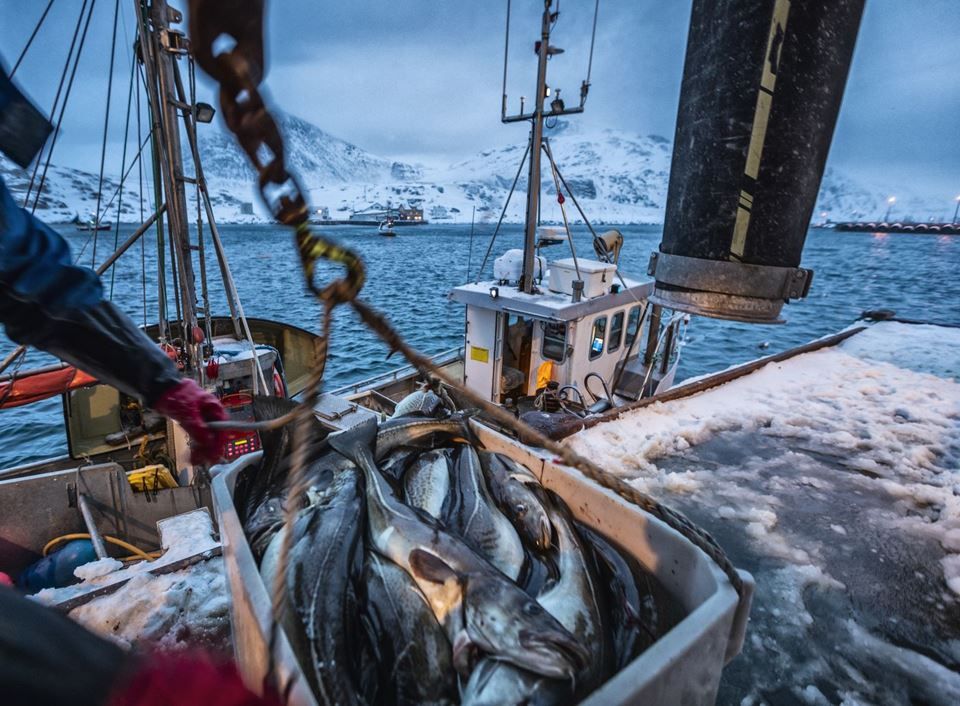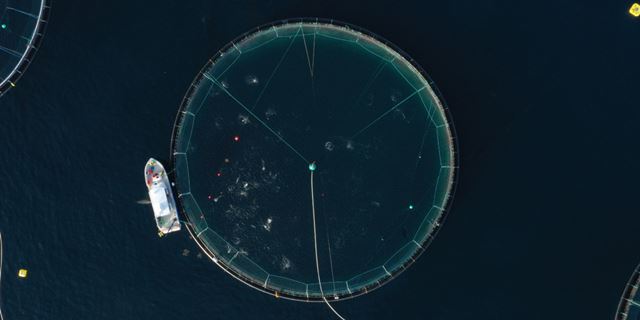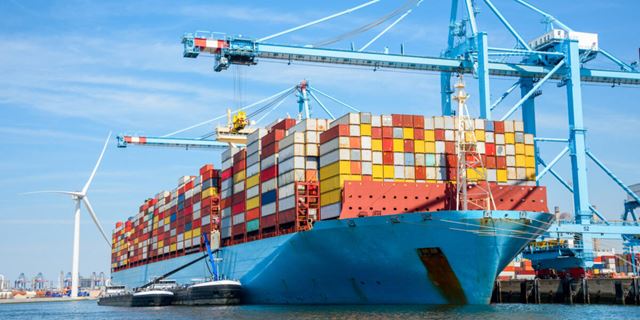The fisheries sector is a dangerous profession, and fishers working from small vessels are at the greatest risk. They are often alone on board, working on boats measuring between 6 and 11 metres long. In a recent report Personulykker i den norske fiskeflåten (Accidents involving personnel in the Norwegian fishing fleet/in Norwegian), researchers present a review showing that more than half of the 149 fishers who lost their lives in accidents occurring between 2000 and 2022 were working on small vessels.

Research Scientist Ingunn Marie Holmen at SINTEF Ocean.
Safety researcher Ingunn Holmen at SINTEF Ocean has been heading the work behind the report.
“Sadly, we now have to add yet another fatality to the 155 lost so far since the new millennium”, says Holmen. On Monday 4 March she received news that the fisher who fell overboard the previous Friday had lost his life.
“Yet another solitary fisher working on a small vessel”, says Holmen. “This fatality serves to underline the seriousness of our message. When we know why accidents happen, it will be possible to prevent them more effectively, so we must increase our efforts to stop fishers losing their lives at work”, she says.
Holmen believes that the Norwegian parliament’s commitment to a zero vision for deaths and serious injury in the fishing fleet must be followed up.
“Our figures demonstrate that we have a long way to go, and our systematic review has provided useful information”, she says.
When you’re alone on board … if something starts to go wrong, it can go very badly wrong.
Holmen also thinks that both vessel owners and those working on fishing boats can make use of this information. She hopes too that other actors, such as special interest groups, the public authorities, insurance companies, educational institutions, the rescue services, technology suppliers and boat builders, will also sit up and take notice.
Drowning is the most common
“When you’re alone on board … if something starts to go wrong, it can go very badly wrong”. So said one of the informants interviewed in connection with the research project called Serious accidents in the coastal fishing fleet – causes and preventive measures. Solitary fishermen have no one on board to come to their aid if they fall into the sea, and it is once they are in the water that most of them lose their lives.
Eight out of ten fatalities among professional fishers occur by drowning following vessel accidents resulting in crew members falling overboard either into the open sea or harbour waters. These figures entail about 30 and 32 per cent respectively between shipwrecks and man-overboard incidents, while almost 17 per cent have drowned after a fall into the water while being transported either to or from their own vessel in harbour waters.
A little over 14 per cent died as a result of being struck or crushed by various objects, while the remaining seven per cent lost their lives due to fire, gas leakages, electric shock, being hit by falling objects, falls on board a vessel or on harbour premises, or injuries resulting from sharp or pointed objects.
Register reveals all
Thanks to the official Register of Norwegian Fishermen, we have a helpful list of all fishers resident in Norway who wish to hold fishing rights and obtain sickness and other welfare benefits, including the many who are self-employed. During the two decades between 1990 and 2010, the number of full-time professional fishers declined from 20,475 to half that total. Since 2010, numbers have remained relatively stable and, at the close of 2022, the Register held 9,597 persons recorded as full-time fishers.
“Because we know how many have fishing as their primary occupation, as well as their ages, we’re able to say something about the numbers and age groups that are most vulnerable to accidents”, says Holmen. “This is in contrast to the aquaculture sector, where no equivalent register of those working in the industry exists”, she says.
The figures in the SINTEF report show that the age groups under 40 are under-represented in the fatality statistics. The most vulnerable group comprises those between 40 and 49, followed by those in the group 60 to 69. If we look at figures for the fleet’s larger sea-going vessels in isolation, we see that it is the under 40s who are most vulnerable to accidents. This correlates well with the fact that the average age for fishers on these vessels is somewhat younger.
Key figures
Causes of fatalities in the Norwegian fishing fleet (2000-2023):
Falls overboard: 32%
Shipwrecks: 30%
Transport to and from own vessel in harbour waters: 17%
Being struck or crushed by various objects: 14%
Other: 7%
Source: SINTEF Ocean
Accidents that don’t happen
In the first six months of 2023, the Norwegian Maritime Authority carried out a survey of maritime safety. About one quarter of respondents said that they had been involved in one or more situations that could have developed into a serious accident, but where the hazard was averted.
We work until we’re finished, especially if there’s a lot of fish. And sometimes, we probably go a little too far.
Holmen is convinced that records of near misses may be important as a basis for research and action linked to accident prevention. She also believes that it would be a good idea if so-called ‘harmless accidents’ were the subject of injury potential assessments.
“When things are busy on board, it’s all too easy to disregard a near miss, even if it had a high injury potential, with the thought that ‘well everything turned out all right – nothing to make a fuss about’”, says Holmen. However, sharing experience and reporting near misses is the same as taking responsibility for one’s own and one’s colleagues’ safety. A situation that turned out fine first time round may go very badly next time if the risk of injury is not identified and remedied”, she says, going on to add:
“We’re well aware that a fisher’s working day, especially for those on smaller vessels, doesn’t allow much time for reporting near misses. But perhaps this makes it even more important to analyse the total accident picture in order to reveal common factors and assess trends across the various shipowners and vessel types.
When the rules lead to risks
The Maritime Authority’s report also points out that management decisions implemented with the aim of reducing pressure on fish stocks may act as stressors on fishers because crews tend to intensify their work efforts during restricted catch periods. Respondents to the survey believe that in some situations, legislation and regulations may cause fishers to take big risks. As one respondent said: “We work until we’re finished, especially if there’s a lot of fish. And sometimes, we probably go a little too far”. This is especially true under the so-called ‘Olympic’ quota arrangement, where quotas are not allocated to individual vessels, but to a group.
It is important when we discuss safety in the sector to be aware of the consequences that stock management decisions have for fishers’ working conditions.
This arrangement means that vessels pull out all the stops in order to secure the biggest possible proportion of the group quota. The risk associated with competitive fisheries was also highlighted by the Norwegian Accident Investigation Board during an inquiry into a fatal accident on the vessel ‘Hunter’ in 2023, when a fisher fell overboard while setting crab traps.
Another example of a situation in which legislation has in fact contributed to increased risk is the issue of the so-called ‘paragraph’ vessels. These are short, broad-beamed fishing vessels, ultra-adapted to obtain maximum catch volumes per metre within a given regulation length class. Such designs have been developed at the expense of seaworthiness and thus increase the risk of shipwreck.
“It is important when we discuss safety in the sector to be aware of the consequences that stock management decisions have for fishers’ working conditions”, says Holmen. “The most recent quota proposals enable newer, smaller vessels under 11 metres to fish for two quotas under a so-called ‘ID quota’ arrangement, by which catch quotas previously allocated to old boats are merged and assigned to fewer, newer ones. This is an important safety measure because it offers fishers the opportunity to avoid solitary fishing expeditions”, says Holmen.




